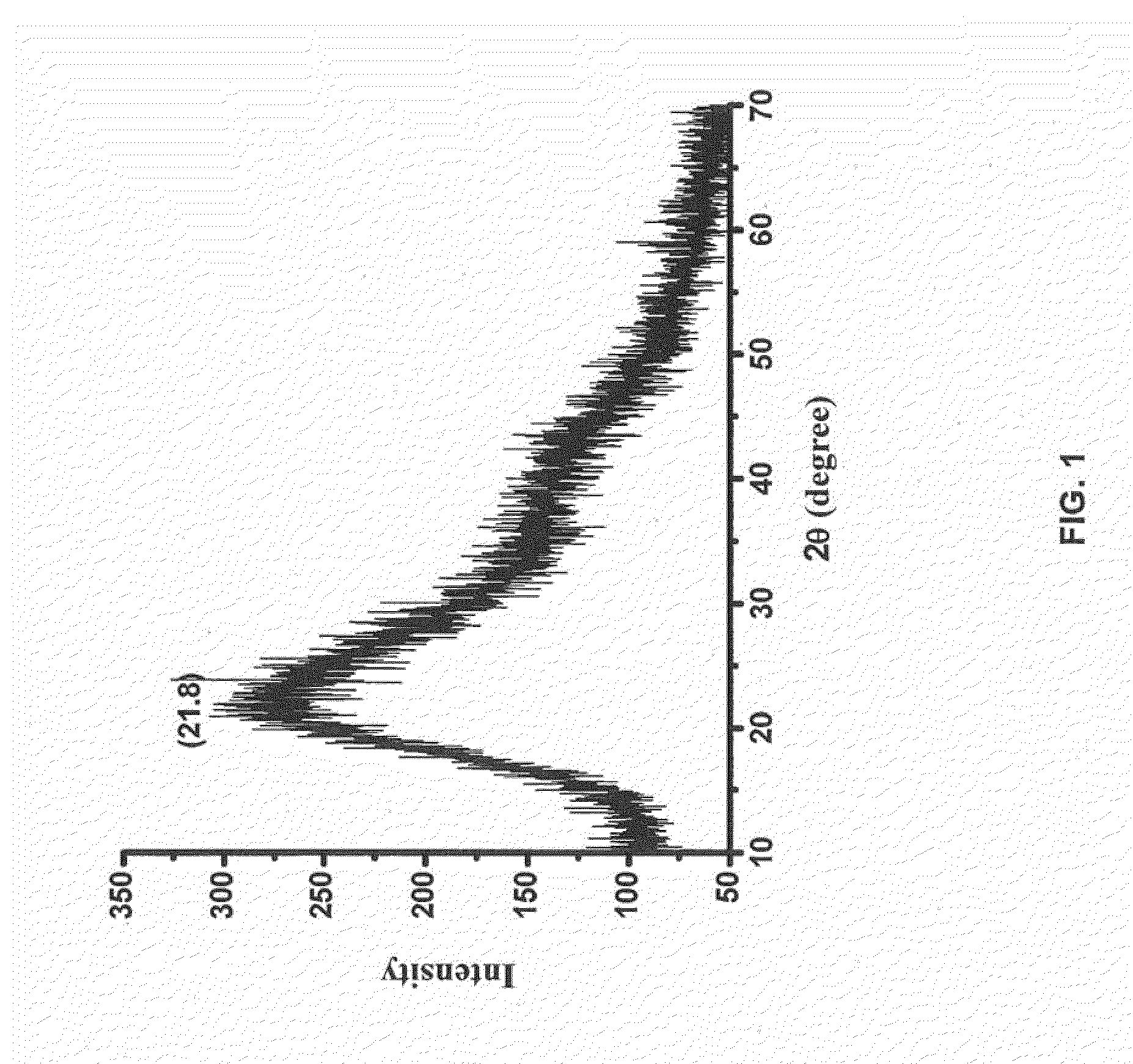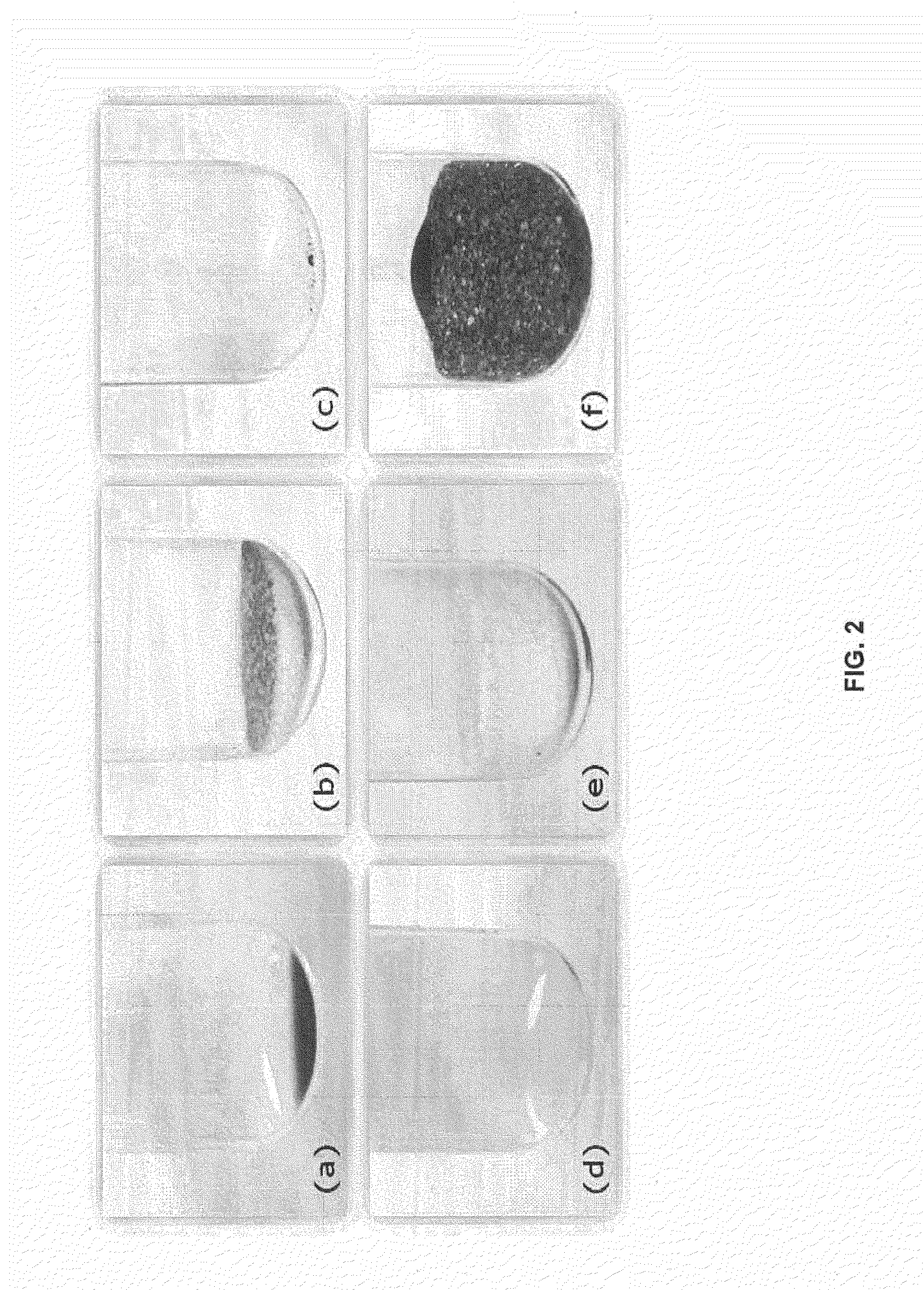Carbon-based fluorescent tracers as oil reservoir nano-agents
- Summary
- Abstract
- Description
- Claims
- Application Information
AI Technical Summary
Benefits of technology
Problems solved by technology
Method used
Image
Examples
example 1
Synthesis of A-Dots (Carbon-Dots)
[0054]In a typical process, 4.2 g citric acid monohydrate and 3.66 g ethanolamine were dissolved separately in 10 mL of deionized water and mixed using a magnetic stirrer. The reaction mixture was then heated to about 70° C. on a hot plate under constant stirring to evaporate the majority of the water from the reaction mixture. When the reaction mixture became syrupy, the magnetic bar was removed and the reaction mixture was placed in a furnace and heated of at least about 200° C. in air at a rate of 10° C. / min for at least about 3 hrs. The resulting black product was allowed to cool to room temperature and used without any further purification. The products are highly soluble / dispersible in water.
[0055]In certain embodiments, the synthesis of the A-Dots leads to uniformly sized hybrid nanoparticles (hairy) that are readily dispersible in water and organic solvents, depending upon the length and type of ligands that are attached to the carbon core.
[0...
example 2
Scale Up Synthesis of A-Dots (Carbon-Dots)
[0057]For the scale up synthesis of A-Dots, 378 g of citric acid monohydrate and 330 g of ethanolamine were separately added to two large beakers and combined with enough deionized water was added to each to bring the volume to 900 mL. After complete dissolution, the ethanolamine solution was added to the citric acid solution under constant magnetic stirring. The mixture was stirred and heated at 70° C. on a hot plate to evaporate most of the water. After the volume was reduced to about 650 mL, the mixture was transferred to 1 L glass bottles and heated at 200° C. in air at a rate of 10° C. / min for 8 hrs.
example 3
Characterization of A-Dots
[0058]The carbon-dots were synthesized via a one-pot reaction using the citrate salt as a precursor. When citric acid and ethanolamine are mixed, the corresponding ammonium carboxylate salt is formed. During pyrolysis, the citrate part of this precursor molecule provides the source of carbon for the core with the remaining ammonium groups attached to the surface. The reaction leads to uniform size hybrid (hairy) nanoparticles in high yield that are readily dispersible in water or organic solvents, depending on the type and length of ammonium hairs attached to the carbon core. Referring to FIG. 5, TEM images of the carbon-dots prepared from an aqueous solution show uniform particles having an average diameter of less than about 10 nm. Referring now to FIG. 6, the resulting nanoparticles are negatively charged having a zeta potential of about −26 mV. Without wishing to be bound by any single theory, the negative charge and zeta potential are possibly due to t...
PUM
| Property | Measurement | Unit |
|---|---|---|
| Temperature | aaaaa | aaaaa |
| Temperature | aaaaa | aaaaa |
| Temperature | aaaaa | aaaaa |
Abstract
Description
Claims
Application Information
 Login to View More
Login to View More - R&D
- Intellectual Property
- Life Sciences
- Materials
- Tech Scout
- Unparalleled Data Quality
- Higher Quality Content
- 60% Fewer Hallucinations
Browse by: Latest US Patents, China's latest patents, Technical Efficacy Thesaurus, Application Domain, Technology Topic, Popular Technical Reports.
© 2025 PatSnap. All rights reserved.Legal|Privacy policy|Modern Slavery Act Transparency Statement|Sitemap|About US| Contact US: help@patsnap.com



